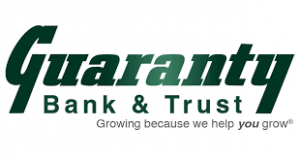Applying for a mortgage is an exciting and stressful time. There’s the anticipation of buying a home or property, and the nerves about the application and approval processes. To make the mortgage application process smoother, here are 8 things to do before applying.
1. Check Your Credit Score
Your credit score is one of, if not the, most important criterion for home loan approval. It can also take a long time to address issues on your credit report, so it’s not something you can do at the last minute. You can check your credit score and receive a detailed credit report for free using several free apps. Many credit card companies also offer you a free credit report annually.
Higher credit scores result in better mortgage rates, so it pays to know what your score is and start to raise it before applying.
2. Reduce Your Debts
Paying down your debts is a key step to take for several reasons. For one, lenders will look at your existing debt obligations and how much your balances are compared to your credit limits to determine how much loan to approve you for. Lowering your debt burden also allows you to put more resources towards a down payment or afford a larger mortgage more easily.
3. Know What You Need
Banks need to verify your statements made in your mortgage application, which is why you’ll need many documents when you apply. Typical documents necessary from each buyer who will be on the loan, include a month of pay stubs or statements, two years of tax documents, three months of bank account statements, and documentation to explain any unusually large depositions or withdrawals.
4. Understand What You Can Afford
Many lenders use the 28/36 rule, which means that your mortgage payment can be no more than 28 percent of your gross income and that your revolving debt, including the new mortgage, car loan, credit card payments, student loans and other obligations, comprise no more than 36 percent of your gross income. This is not a universal rule but is a good guideline to use.
5. Know Your Loan Types
There are several loan packages available. A fixed-rate, 30-year loan is one of the most common. However, loans come in many different durations, including 5-, 10-, 15- and 20-year types. Adjustable-rate mortgages are another option.
6. Learn How Interest Rates Work
At some point in the mortgage process, you will need to lock in a rate. Be sure you understand what your mortgage rate means for your monthly payment amount, the total cost of the mortgage and the payoff terms. Adjustable rates often are triggered after a certain amount of time, usually 5 years, so be sure to understand how much your rate could change and when.
7. Spend Less
Spending less has multiple benefits. It will stop you from incurring additional debt and help in adjusting to the reality of adding a mortgage payment to your monthly budget.
8. Know the Market
When you’re shopping for a home and a mortgage, you need to develop a clear understanding of what houses cost in different communities and neighborhoods. You do not want to get your heart set on a particular location only to find you do not have enough capacity to afford to live there.
 At Guaranty Bank & Trust, we support our customers with education about the mortgage process and a commitment to exceptional service. Meet the team and contact one of our mortgage originators to learn more.
At Guaranty Bank & Trust, we support our customers with education about the mortgage process and a commitment to exceptional service. Meet the team and contact one of our mortgage originators to learn more.
Source: Advice & Features - goodlifefamilymag.com



